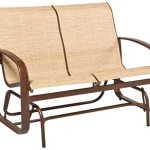Best Way to Clean Teak Furniture
Teak furniture, prized for its durability and natural beauty, is a common sight in outdoor spaces. Its rich golden-brown hue and resistance to weather elements make it a popular choice for patios, decks, and gardens. However, exposure to the environment inevitably leads to grime buildup, discoloration, and the development of a weathered grey patina. While the patina is aesthetically pleasing to some, others prefer to maintain the original warm color of the wood. This article focuses on outlining the best methods for cleaning teak furniture, ensuring its longevity and aesthetic appeal, regardless of the desired finish.
Regular cleaning is crucial for preserving teak furniture. Routine maintenance prevents the accumulation of dirt, mildew, and other substances that can degrade the wood over time. Neglecting cleaning allows these substances to penetrate the teak's natural oils, diminishing its protective properties and potentially leading to damage. Understanding the appropriate cleaning techniques and employing the right materials are essential for achieving optimal results without harming the wood.
Understanding Teak's Properties
Before delving into cleaning methods, it is important to understand the unique properties of teak wood. Teak is a dense hardwood known for its high oil content. This natural oil acts as a preservative, making the wood resistant to rot, insects, and water damage. However, this oil can also attract dirt and dust, leading to surface grime. Prolonged exposure to sunlight can cause the wood's surface to oxidize, resulting in the silver-grey patina so characteristic of aged teak. This process is natural and does not compromise the structural integrity of the wood.
The cleaning approach should consider the desired outcome. If the goal is to maintain the original golden-brown color, more intensive cleaning and potential treatment are necessary. If the weathered grey patina is preferred, a gentler cleaning method will suffice to remove surface dirt without stripping the wood of its natural oils or accelerating the greying process.
Gentle Cleaning for Surface Dirt and Mildew
For routine maintenance and removal of surface dirt, a gentle cleaning method is recommended. This approach is suitable for teak furniture that is regularly cleaned and does not have heavy buildup of grime or mildew. The primary tools required include a soft-bristled brush, mild soap, and water.
The first step involves rinsing the furniture with water to remove loose debris. A garden hose with a gentle spray nozzle is ideal for this purpose. Avoid using a pressure washer at this stage, as high pressure can damage the wood fibers. Next, prepare a solution of mild soap and warm water. Dish soap or a specialized teak cleaner diluted according to the manufacturer's instructions can be used. Apply the solution to the furniture using the soft-bristled brush, scrubbing gently in the direction of the wood grain. Pay particular attention to areas with visible dirt or mildew.
After scrubbing, rinse the furniture thoroughly with clean water to remove all traces of soap. Leftover soap residue can attract dirt and promote mildew growth. Allow the furniture to air dry completely. Ensure proper ventilation to prevent moisture buildup and potential warping. This cleaning method is effective for removing light dirt and surface mildew, leaving the teak clean and refreshed.
Deep Cleaning for Heavy Grime and Discoloration
When teak furniture has been neglected for an extended period or exhibits heavy grime buildup and discoloration, a more intensive cleaning method is required. This approach aims to remove embedded dirt, mildew stains, and restore the wood's original color. Essential tools for deep cleaning include a stiff-bristled brush, teak cleaner, and optionally, a teak brightener.
Begin by rinsing the furniture with water to remove loose debris, as with the gentle cleaning method. Next, apply a specialized teak cleaner according to the manufacturer's instructions. These cleaners typically contain chemicals that break down dirt, mildew, and other contaminants. Use a stiff-bristled brush to scrub the furniture thoroughly, working in the direction of the wood grain. Pay close attention to areas with heavy staining or mildew growth. For stubborn stains, allow the cleaner to sit on the surface for a few minutes before scrubbing, but avoid letting it dry completely.
After scrubbing, rinse the furniture thoroughly with clean water. Ensure all traces of the teak cleaner are removed. At this stage, a teak brightener can be used to restore the wood's original color. Teak brighteners typically contain oxalic acid, which helps to remove grey oxidation and brighten the wood. Apply the brightener according to the manufacturer's instructions, allowing it to sit on the surface for the recommended time. Rinse the furniture thoroughly with clean water after applying the brightener.
Allow the furniture to air dry completely. Once dry, consider applying a teak sealant or oil to protect the wood and maintain its color. These treatments help to prevent future grime buildup and water damage. It is important to choose a sealant or oil specifically designed for teak wood to ensure compatibility and effectiveness.
Addressing Mildew and Mold Growth
Mildew and mold are common issues on teak furniture, particularly in humid environments. These fungi can thrive on the wood's surface, causing unsightly stains and potentially degrading the wood over time. Addressing mildew and mold growth requires a slightly different approach than general cleaning.
Before cleaning, it is important to take precautions to protect oneself from fungal spores. Wear gloves and a mask to prevent inhalation of spores during the cleaning process. The first step is to prepare a cleaning solution specifically designed to kill mildew and mold. A mixture of bleach and water can be effective, but it is important to use caution when working with bleach. A solution of one part bleach to ten parts water is generally recommended. Alternatively, commercial mildew and mold removers can be used according to the manufacturer's instructions.
Apply the cleaning solution to the affected areas, ensuring thorough coverage. Allow the solution to sit on the surface for several minutes to kill the mildew and mold. Use a stiff-bristled brush to scrub the affected areas, removing the dead fungi and any remaining stains. After scrubbing, rinse the furniture thoroughly with clean water. Ensure all traces of the cleaning solution are removed.
Allow the furniture to air dry completely. To prevent future mildew and mold growth, ensure proper ventilation and consider applying a mildew-resistant sealant or finish to the wood. Regularly cleaning the furniture and addressing any signs of mildew or mold growth promptly help to maintain its appearance and prolong its lifespan.
Preventative Measures and Long-Term Maintenance
Beyond regular cleaning, several preventative measures can be taken to protect teak furniture and minimize the need for intensive cleaning. These measures involve protecting the furniture from the elements and implementing routine maintenance practices.
One of the most effective ways to protect teak furniture is to cover it when not in use. This shields the wood from direct sunlight, rain, and snow, preventing fading, grime buildup, and water damage. Outdoor furniture covers made from breathable, waterproof materials are ideal for this purpose. Ensure the covers are properly secured to prevent them from being blown away by wind.
If covering the furniture is not practical, consider placing it in a shaded area. This reduces exposure to direct sunlight and helps to minimize fading. Regularly inspecting the furniture for signs of dirt, mildew, or damage is also essential. Addressing any issues promptly prevents them from escalating and causing more significant problems.
Applying a teak sealant or oil on a regular basis can help to protect the wood and maintain its color. These treatments create a barrier against water, dirt, and UV rays, preventing fading, cracking, and grime buildup. Choose a sealant or oil specifically designed for teak wood and apply it according to the manufacturer's instructions. Reapply the treatment every few months or as needed to maintain optimal protection. Periodic light sanding can also help to remove minor imperfections and prepare the surface for sealant or oil application.
Proper storage during the off-season is also crucial for long-term maintenance. If possible, store teak furniture indoors in a dry, well-ventilated area. This protects the furniture from harsh weather conditions and prevents damage. If indoor storage is not feasible, cover the furniture securely and place it in a sheltered location, such as a garage or shed.
By implementing these preventative measures and following a regular cleaning schedule, the longevity and aesthetic appeal of teak furniture can be preserved. Consistent maintenance minimizes the need for intensive cleaning and helps to ensure that the furniture remains a beautiful and functional addition to any outdoor space for years to come.

How To Clean Teak Furniture Youtube

Restore Outdoor Teak Table No Sanding Cleaning Oiling

Can You Pressure Wash Teak Furniture Cleaning

How To Clean And Restore Teak Furniture Or Deck Without Sanding Staining

Mitchell S Interiors How To Clean Outdoor Teak Furniture

How To Clean Teak Furniture Properly Deck Professionals

How To Clean And Restore Teak Garden Furniture

How To Clean Restore Outdoor Patio Ipe Wood Furniture Teak Master

Mitchell S Interiors How To Clean Outdoor Teak Furniture

Our Step By Guide To Cleaning Teak Furniture Garden Centre
See Also








